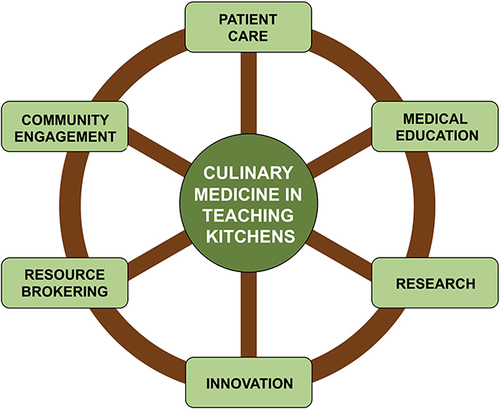Figures & data
Table 1 Resources for Training and Education
Figure 1 The role of culinary medicine in a multifaceted approach to addressing diet-related disease. Effectively preventing and treating diet-related chronic disease will necessitate systemic changes that address food insecurity and time poverty, provide nutrition and culinary education, and ensure access to interprofessional healthcare. As part of this interprofessional healthcare, culinary medicine serves as the vital link in empowering patients to transform healthy ingredients into healthy dietary patterns.

Figure 2 Culinary medicine in teaching kitchens as the “hub”. Culinary medicine in teaching kitchens, by its interprofessional and multidisciplinary nature, seamlessly integrates healthcare, academia, and public service. Patients, providers, community members, researchers, universities, insurance companies, and healthcare systems all benefit from this collaboration.

